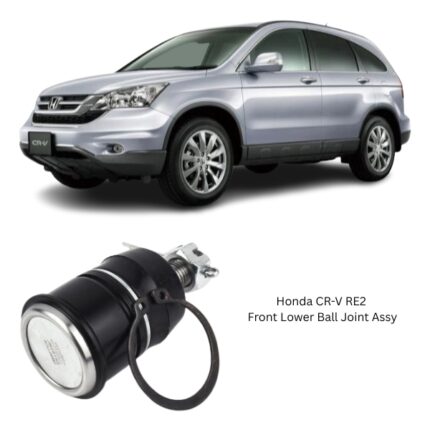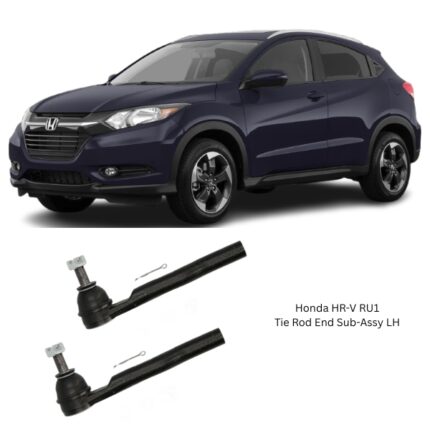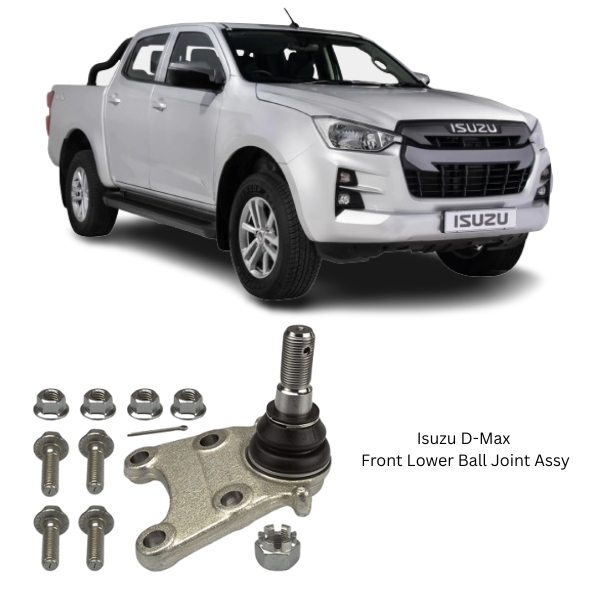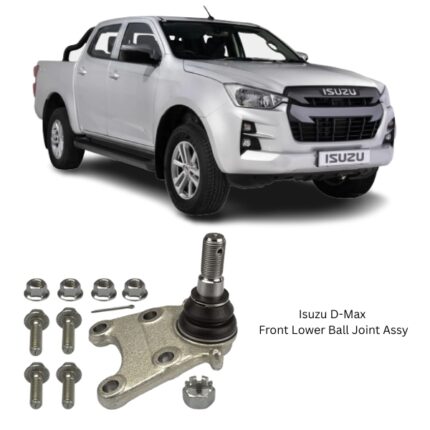Get Isuzu D-Max Front Lower Ball Joint Assy 8-94459-465-2 in Kenya
The Front Lower Ball Joint Assembly is one of the most crucial components in a vehicle’s front suspension system. As a load-bearing pivot point between the steering knuckle and the lower control arm, it allows the front wheels to move up and down in response to road conditions while also enabling rotational movement for steering. Despite being compact in size, the front lower ball joint plays a significant role in vehicle handling, stability, and safety.
This component must endure extreme pressure, road vibrations, and constant articulation over a vehicle’s lifetime. Because of its function and location, it is engineered for strength, durability, and precise movement.
Function and Role in the Suspension System
The primary function of the front lower ball joint is to serve as a pivoting connection point that allows for two types of motion simultaneously:
-
Vertical Suspension Travel
As the wheels travel over bumps, potholes, and dips, the lower ball joint allows the steering knuckle and wheel assembly to move vertically relative to the vehicle frame. -
Rotational Steering Movement
The ball joint permits the steering knuckle to rotate left and right in sync with steering input from the driver.
Combined Functions:
-
Supports vehicle weight (especially in MacPherson strut and double-wishbone suspension systems).
-
Maintains wheel alignment angles (caster and camber).
-
Provides a flexible yet strong joint that enables complex movement patterns.
-
Ensures stable handling and tire contact with the road surface at all times.
Design and Construction
The Front Lower Ball Joint Assembly is typically a sealed, pre-lubricated unit or a greaseable component consisting of the following elements:
Main Components:
-
Ball Stud (Pin)
A spherical, hardened steel stud that fits into a socket, allowing multidirectional movement. The tapered end is threaded for connection to the steering knuckle. -
Socket Housing
A metal or polymer-lined chamber that holds the ball stud. It is precision-machined to allow smooth rotation and articulation while maintaining tight tolerances to reduce play. -
Dust Boot or Seal
A rubber or polyurethane boot that seals the joint, keeping grease in and contaminants like water, dust, and road debris out. -
Mounting Base
The base of the assembly connects to the lower control arm. It may be designed as a press-in, bolt-on, or rivet-type depending on vehicle specifications. -
Grease Fitting (if serviceable)
Some joints include a grease nipple to allow for periodic lubrication, extending service life.
Materials Used:
-
High-Carbon or Chromoly Steel
For the ball stud, to resist wear, shear, and impact forces. -
Forged or Cast Steel Housing
Provides structural integrity under load. -
Thermoplastic or Polymer Bearings
For low-friction movement inside the socket. -
Sealing Materials
Durable synthetic rubber for temperature and chemical resistance.
Types of Front Lower Ball Joints
Ball joints vary in design depending on the vehicle’s suspension layout and performance requirements:
-
Press-In Ball Joints
Pressed into the control arm using a hydraulic or mechanical press. -
Bolt-On Ball Joints
Fastened with bolts and nuts, simplifying installation and removal. -
Integrated Ball Joints
Built into the lower control arm. These require the entire arm to be replaced when worn. -
Serviceable Ball Joints
Include grease fittings for extended maintenance. -
Sealed-for-Life Ball Joints
Pre-lubricated and maintenance-free, though non-serviceable.
Operational Importance
The Front Lower Ball Joint is a load-bearing joint in most front suspension systems. Its failure can result in:
-
Loss of steering control
-
Irregular tire wear
-
Suspension misalignment
-
Compromised braking performance
Its role in both steering and suspension makes it a safety-critical part that must be in optimal condition at all times.
Symptoms of a Failing Front Lower Ball Joint
Because it operates under stress and wears gradually, ball joint failure may develop subtly at first, then escalate into serious mechanical and safety issues.
Common Signs of Failure:
-
Clunking or Popping Noises
Especially when driving over bumps or making sharp turns, caused by looseness in the joint. -
Uneven or Rapid Tire Wear
Often on the inner or outer edges, indicating alignment changes due to joint looseness. -
Wandering Steering
The vehicle may drift or pull to one side due to poor alignment or play in the joint. -
Vibration in the Steering Wheel
Particularly during turns or at high speeds. -
Loose or Unstable Front Suspension
Felt as a general lack of control or response during acceleration, braking, or cornering. -
Visible Damage
Torn dust boots, leaking grease, rust, or corrosion on the joint.
Inspection and Testing
A ball joint inspection is typically done during suspension service or tire changes. Technicians will:
-
Raise the Vehicle and Unload Suspension
Use a jack to take weight off the lower control arm. -
Check for Play
Using a pry bar or by moving the wheel vertically/horizontally to detect any looseness. -
Visual Inspection
Look for damaged boots, rust, or leakage. -
Road Testing
Drive to listen for noises and feel for any steering irregularities.
Replacement and Installation
Replacing the Front Lower Ball Joint Assembly involves varying levels of complexity based on design. In general:
Steps Include:
-
Raise and Secure the Vehicle
Use jack stands and secure the vehicle properly. -
Remove Wheel and Brake Components
Disassemble parts obstructing access to the control arm and ball joint. -
Separate the Ball Joint from the Knuckle
Use a ball joint separator tool to disconnect the joint without damaging adjacent components. -
Remove the Old Ball Joint
Either press out or unbolt it, depending on design. -
Install the New Ball Joint
Use a press or torque wrenches as required. Apply grease if the joint is serviceable. -
Reassemble and Torque Components
Follow manufacturer specifications for torque settings and reinstall suspension components. -
Wheel Alignment
After replacement, a professional alignment is recommended to ensure proper geometry.
Maintenance Tips
-
Inspect During Routine Service
Particularly when tires are replaced or during brake/suspension checks. -
Maintain Grease Levels
If the ball joint has a grease fitting, lubricate it as recommended. -
Avoid Overloading the Vehicle
Excessive weight increases wear on suspension components. -
Check Boots and Seals
Torn or cracked boots should be addressed promptly to prevent contamination.
Follow us on Facebook for more parts.





Reviews
Clear filtersThere are no reviews yet.